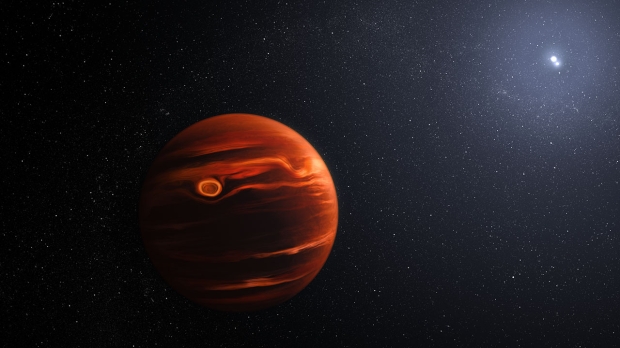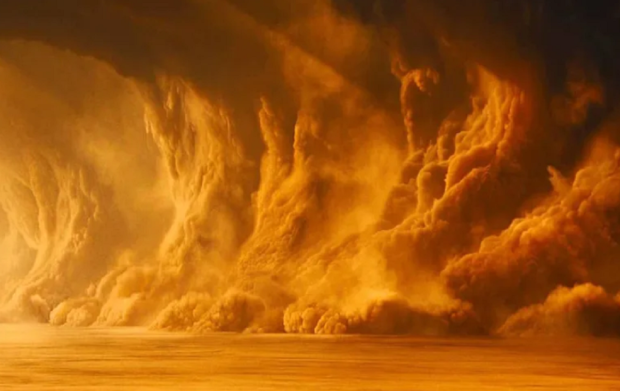Researchers have honed the very sensitive instruments equipped to the James Webb Space Telescope on a planet in a distant star system, gathering data that informs researchers on the conditions of the planet.

Artist interpretation of VHS 1256b
The lucky planet to be a target of the highly advanced James Webb Space Telescope (JWST) is an exoplanet called VHS 1256 b, which researchers explain in a recent press release, is a massive brown dwarf planet that's located approximately 40 light-years away from Earth and orbits, not one, but two stars over a 10,000-year period. The researchers explain that VHS 1256 b orbits its stars four times further than Pluto orbits our Sun.
This aspect of VHS 1256 b makes it a prime target for Webb as the light from the planet isn't getting mixed up with the star it's orbiting, allowing Webb to gather a much more accurate reading. According to the press release, the higher altitudes of VHS 1256 b's atmosphere reach temperatures of 1,500 degrees Fahrenheit, and within those clouds, Webb detected both large and small silicate dust grains. The smaller grains are comparable to the size of tiny particles that appear in smoke, and the larger grains are similar to extremely hot grains of sand.
Compared to Earth, VHS 1256 b has much lower gravity which enables clouds to remain at very high altitudes, making them perfect for Webb's analysis. Notably, the exoplanet was first detected in 2015 by the Vista telescope in Chile, and received the nickname "super Jupiter" as the exoplanet has many of the same features as Jupiter but is anywhere between 12 to 18 times the mass. Earlier studies done on VHS 1256 b suggested the exoplanet had dust present, Webb's analysis on VHS 1256 b has confirmed these suggestions.
Furthermore, researchers report Webb's observations also show clear signatures of water, methane, and carbon monoxide, and provide evidence for the presence of carbon dioxide. Co-author Ben Biller of the University of Edinburgh in Scotland explained that from Webb's "few hours of observations," researchers feel like they have a treasure trove of data to sift through, with the potential of multiple additional discoveries taking place. Webb's ability to provide a large amount of data from a short observation time led Biller to say, "There's a huge return on a very modest amount of telescope time".
For those that don't know, the purpose of the James Webb Space Telescope is to peer back to the earliest stages of the universe and observe exoplanets for possible conditions to support life. So far, Webb is making leaps and bounds with its progress, providing valuable scientific data on various targets within the cosmos. And it's only just the beginning, with the observatory expected to continue advancing our understanding of the cosmos for at least the next 10 years.



